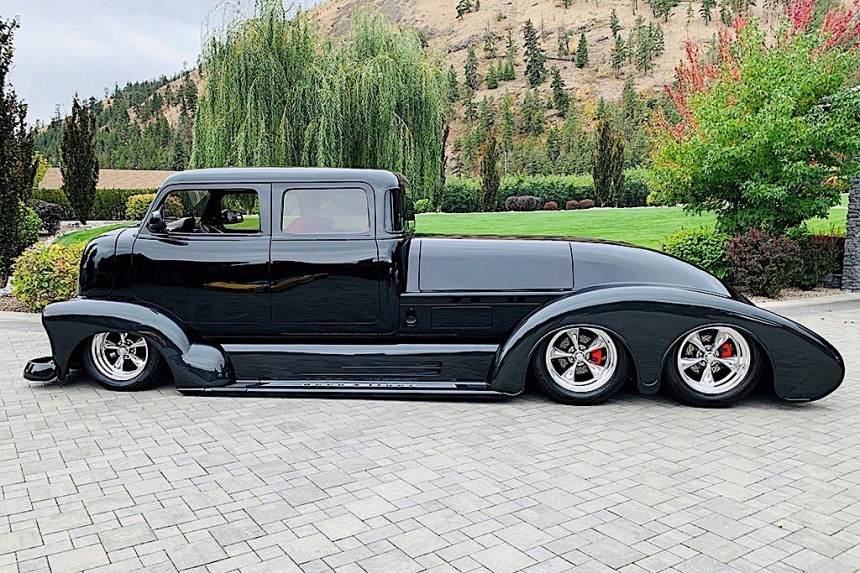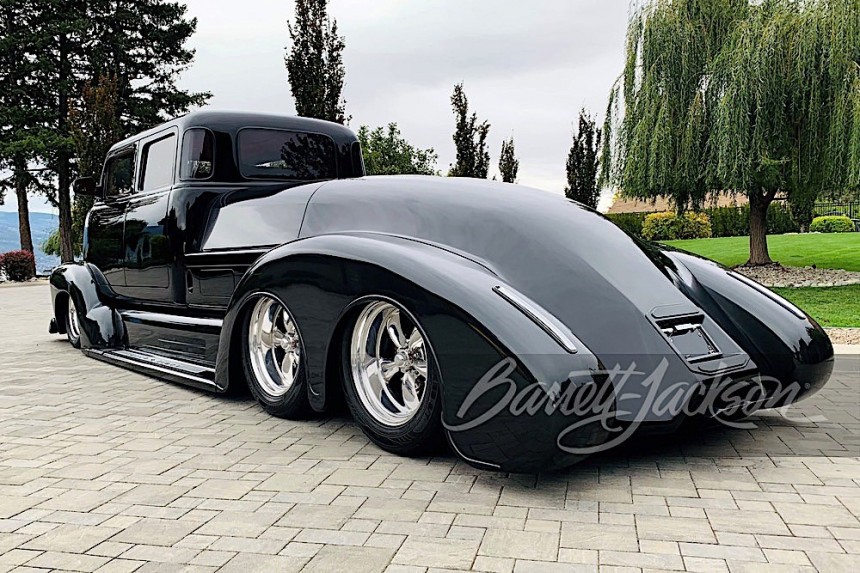
The world of custom vehicles is so diverse that there’s a little bit of something for virtually anyone. We’ve got trucks, SUVs, muscle, classics, and many others, all of them fighting for the attention and the money of auction-goers. And, from time to time, we also have COEs, so insanely styled that once they sell they dwarf everything else.
History has taught us time and again never to take things at face value, and that includes underestimating cab over engine builds from the custom car industry. After all, there were a few instances when COE-based builds surfaced and they were so impressive they outshined everything around them.
Such was the case of the build known as the Decoliner. I personally came across it for the first time back in 2021, when I uncovered it on the lot of cars auction house Barrett-Jackson was about to sell the following year in Scottsdale, Arizona.
I was instantly mesmerized by it. Here I was face to face with a vehicle that is essentially utilitarian, but somehow looked as beautiful as the Chevy Tri-Five, and as powerful as the early muscle cars.
The COE is the work of Dale Gerry, a Canadian customizer who made a name for himself by breathing new life into Mustangs, Celicas, and even non-descript food trucks.
The Decoliner is however the man’s main work. He needed no less than ten years and 10,000 working hours to put it together in a form that makes clear his passion for the Art Deco styles of the late 1930s.
The project started out as a 1948 Chevrolet COE, a humble three-ton delivery truck, but there’s very little of that left on the Decoliner. It was heavily modified to pay “homage to the golden age of automobile styling,” but mixed that with so many other cues that it’ll make your head spin.
From end to end the thing is 23 feet (7 meters) long. Up front we’ve got the cabin, a component of the vehicle that was stretched to accommodate four people. That was done with the fitting of two extra doors (original Chevy ones) and two more bucket seats over the stretched chassis.
The interior is all drowned in red Italian leather. In front of the seats there is a 1960s Chrysler dashboard flaunting Dakota Digital gauges and an Andre’s sound system.
Then the bodywork was heavily sculpted in aluminum and composite materials. The cab by itself is spectacular, but it’s given an even more impressive look by the two fenders that flank it. Together with the ones at the rear, these fenders took no less than 1,000 hours to make – a full ten percent of the entire time dedicated to the entire build.
Behind the cab is the “hump” of the COE, the area that stretches the cab way back and props it over a double set of wheels. In this hump the builder hid a storage compartment that can fit golf clubs. You can gain access to it through doors that open like those on the space shuttle’s cargo bay.
The mechanical bits of the build are no less impressive. The original engine, whatever it was, was replaced by a 502ci Ram Jet V8 sourced from GM. We don’t know its output, but we do know it works through a Gearstar 4L80E overdrive automatic transmission.
The aluminum tandem-axle chassis is held off the ground with the help of a fully adjustable air-ride suspension system backed by Aldan American shocks. The connection to the ground is achieved through American Racing Torq Thrust wheels, they too contributing to the vintage feel of the entire build. Each wheel stops under the force applied by C5 Corvette disc brakes.
I said I first came across the custom COE more than two years ago. Back then I saw someone pay more than half a million dollars to get their hands on it ($511,500, if you want to split hairs).
I brought the COE up again because this month it sold once more. The same auction house, Barrett-Jackson, the same location, Scottsdale, Arizona, the same custom build. But not nearly the same selling price.
This year the 1948 Chevrolet Decoliner sold for $313,500, which is almost exactly $200,000 lower than before. In a nutshell, compared to its last public sale, the COE lost in value the equivalent of a Mercedes-Maybach S 580 4Matic!
The thing will most likely sell again in the near future, and we’ll see then if the downward trend continues or corrects itself.











